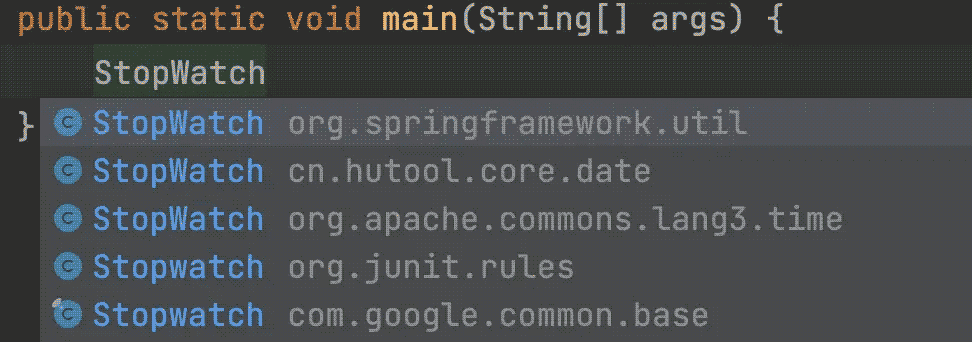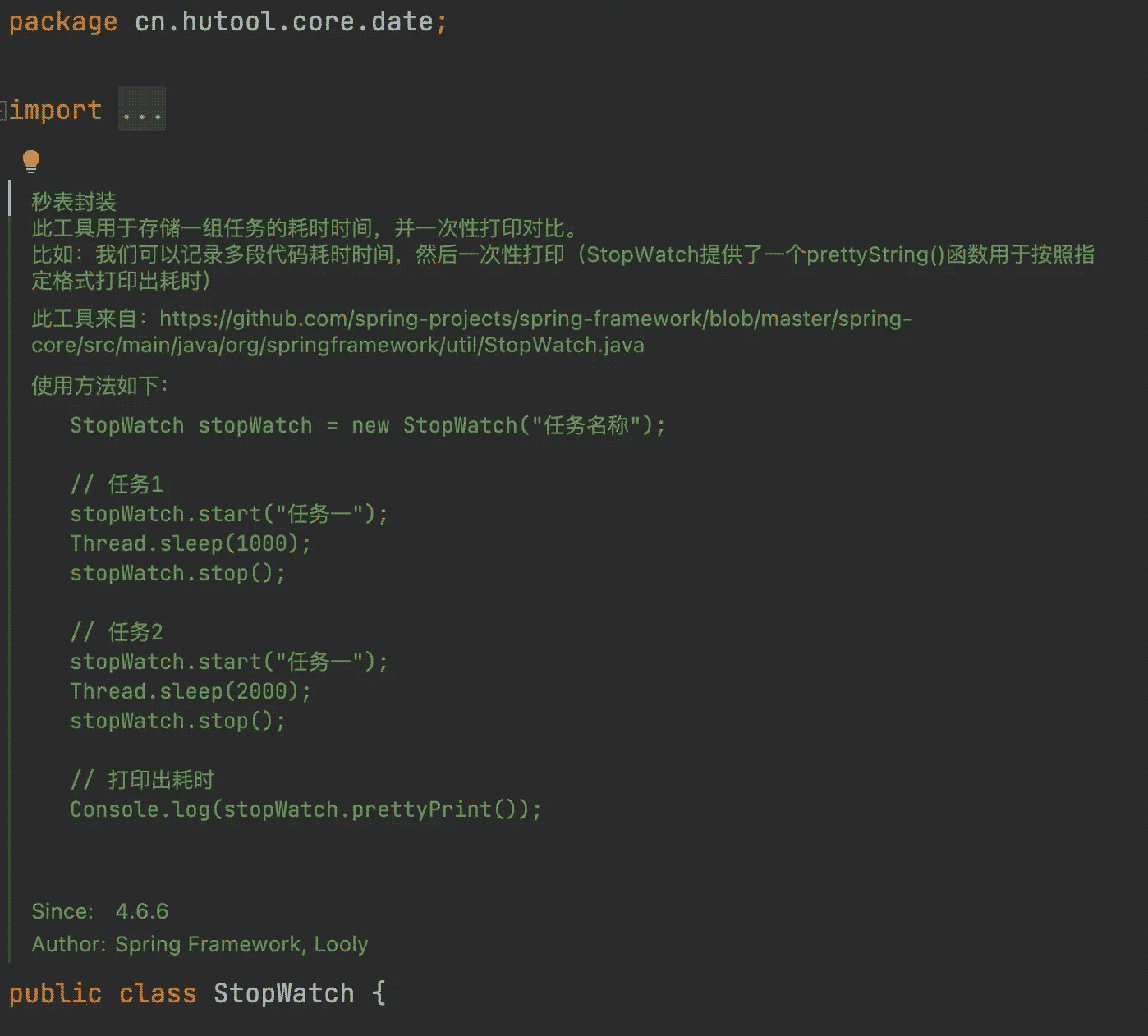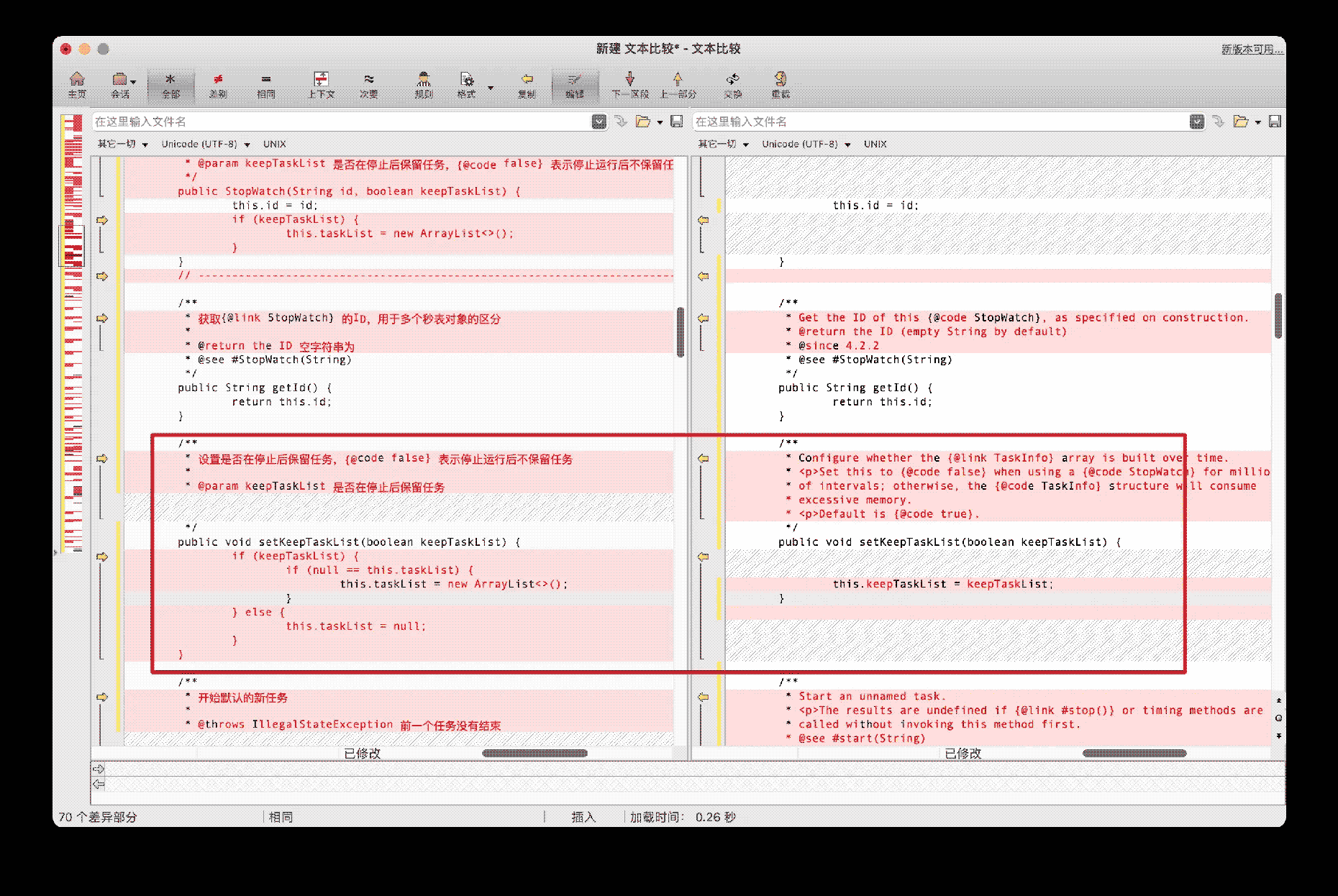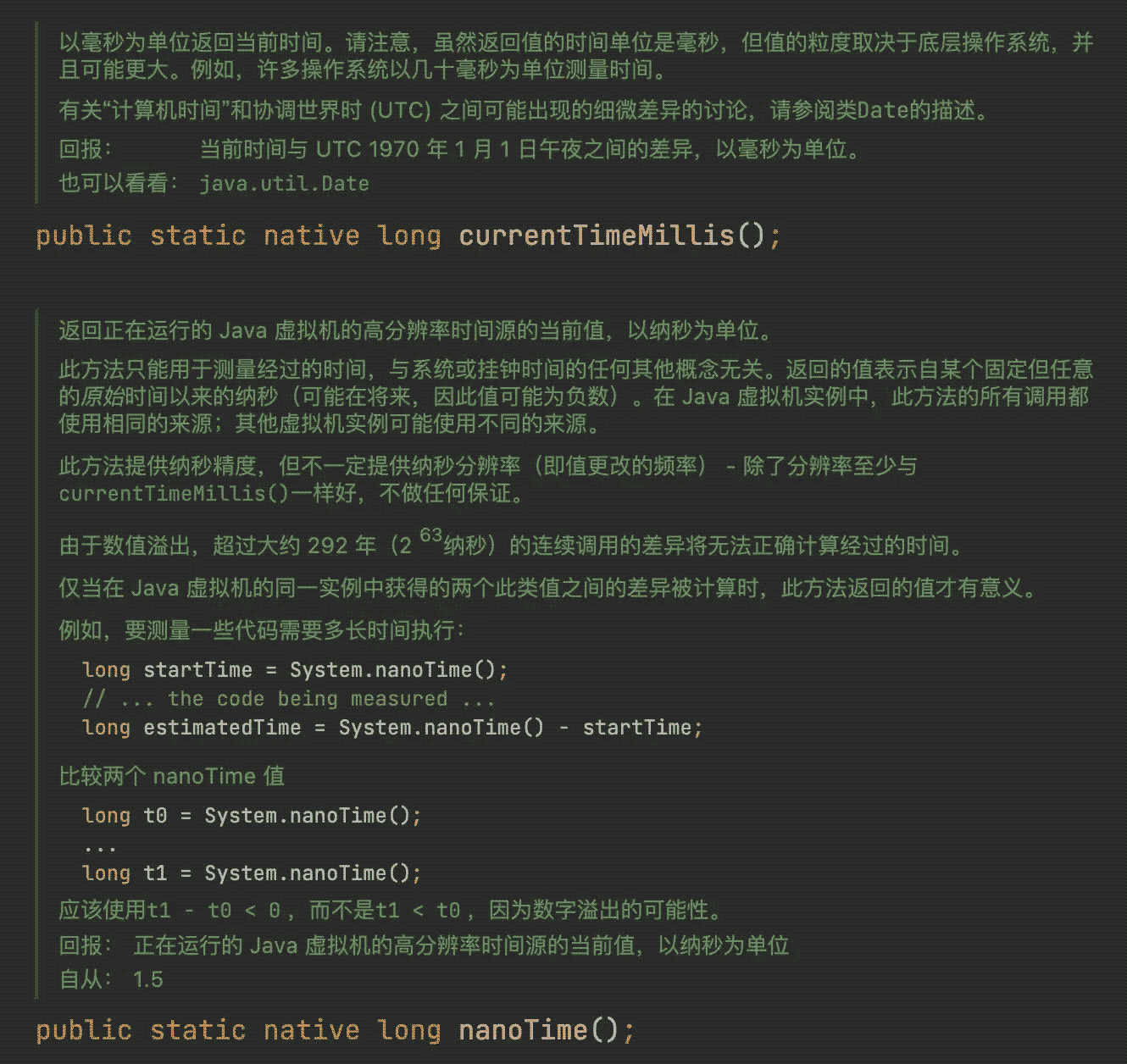今天小编给大家分享一下Spring Boot源码如何实现StopWatch优雅统计耗时的相关知识点,内容详细,逻辑清晰,相信大部分人都还太了解这方面的知识,所以分享这篇文章给大家参考一下,希望大家阅读完这篇文章后有所收获,下面我们一起来了解一下吧。
昨天,一位球友问我能不能给他解释一下 @SpringBootApplication 注解是什么意思,还有 Spring Boot 的运行原理,于是我就带着他扒拉了一下这个注解的源码,还有 SpringApplication 类的 run() 方法的源码,一下子他就明白了。
你别说,看源码的过程还真的是挺有趣,这不,我就发现了一个有意思的点。
public ConfigurableApplicationContext run(String... args) {
StopWatch stopWatch = new StopWatch();
stopWatch.start();
......
stopWatch.stop();
}Spring Boot 是用 StopWatch 来统计耗时的,而通常情况下,我们会用 System.currentTimeMillis() 来统计耗时,对吧?编程喵????开源项目里就有这样一段代码,在处理统一日志处理切面的时候。
@Around("webLog()")
public Object doAround(ProceedingJoinPoint joinPoint) throws Throwable {
long startTime = System.currentTimeMillis();
long endTime = System.currentTimeMillis();
webLog.setSpendTime((int) (endTime - startTime));
}对比之下,我们就能发现,JDK 提供的 System.currentTimeMillis() 没有 Spring 提供的 StopWatch 简洁、清晰。
尤其是在多任务的情况下,StopWatch 简直好用到爆????!
// 创建一个 StopWatch 实例
StopWatch sw = new StopWatch("沉默王二是傻 X");
// 开始计时
sw.start("任务1");
Thread.sleep(1000);
// 停止计时
sw.stop();
System.out.printf("任务1耗时:%d%s.\n", sw.getLastTaskTimeMillis(), "ms");
sw.start("任务2");
Thread.sleep(1100);
sw.stop();
System.out.printf("任务2耗时:%d%s.\n", sw.getLastTaskTimeMillis(), "ms");
System.out.printf("任务数量:%s,总耗时:%ss.\n", sw.getTaskCount(), sw.getTotalTimeSeconds());看到没,是不是很简单?
先 new 一个 StopWatch 对象
再 start 开始计时
然后 stop 停止计时
最后通过 sw.getLastTaskTimeMillis() 得出时间差
如果换成 System.currentTimeMillis() 就要了老命,先得声明好几个 long 型的局部变量,然后要第二个减第一个,第三个减第二个,稍微粗心一点(尤其是 CV 大法)时,很容易搞错。
除了可以通过局部时间,还可以通过 sw.getTotalTimeSeconds() 获取总的耗时。
任务1耗时:1002ms.
任务2耗时:1105ms.
任务数量:2,总耗时:2.107820109s.
另外,StopWatch 还提供了一个 sw.prettyPrint() 方法供打印出漂亮的格式化结果:
StopWatch '沉默王二是傻 X': running time = 2108529351 ns
---------------------------------------------
ns % Task name
---------------------------------------------
1004338467 048% 任务1
1104190884 052% 任务2
有耗时,有占用百分比,还有任务名,非常清晰。
除了 Spring,hutool 工具库和 Apache common 工具包都提供了各自的 StopWatch。

查看 hutool 工具库中的 StopWatch 源码可以得出,该类其实就来自 Spring 的 StopWatch.java,用法也完全一致。

这说明 hutool 的作者也认为 Spring 的 StopWatch 写得好,哈哈哈????。
使用 Beyond compare 比较后也能得出,两者除了一个中文注释,一个英文注释,代码几乎一样。setKeepTaskList 方法有比较大的不同。

那也就是说,如果你的项目中没有使用 Spring 全家桶,只用了 hutool 工具包,那就可以使用 hutool 的 StopWatch 来代替 System.currentTimeMillis()。
通过分析 StopWatch 的 stop 方法源码:
public void stop() throws IllegalStateException {
if (null == this.currentTaskName) {
throw new IllegalStateException("Can't stop StopWatch: it's not running");
}
final long lastTime = System.nanoTime() - this.startTimeNanos;
this.totalTimeNanos += lastTime;
this.lastTaskInfo = new TaskInfo(this.currentTaskName, lastTime);
if (null != this.taskList) {
this.taskList.add(this.lastTaskInfo);
}
++this.taskCount;
this.currentTaskName = null;
}其实可以发现,StopWatch 的内部是通过 System.nanoTime() 来计时的,本质上和 System.currentTimeMillis() 差别并不大。
nanoTime 比 currentTimeMillis 的粒度更细,前者是以纳秒为单位,后者是以毫秒为单位。

注意两者都是 native 方法,也就是说,值的粒度其实取决于底层的操作系统。
看到这,大家可能会恍然大悟,StopWatch 不过是披着一层外衣的 System.currentTimeMillis() 嘛?
但妙就妙在,这层外衣足够的漂亮,足够的优雅。StopWatch 可以记录每个子任务的名称,以及按格式化打印结果,尤其是针对多任务统计时更友好一点。
当然了,除了选择 Spring 和 hutool 的 StopWatch,Apache commons-lang3 的 StopWatch 也是一个不错的可选项,更加灵活多变。
StopWatch sw = StopWatch.createStarted();
Thread.sleep(1000);
System.out.printf("耗时:%dms.\n", sw.getTime());其他两个都是通过 new 来创建 StopWatch 对象,commons-lang3 还可以通过 createStarted(创建并立即启动)、create(创建)来完成。
还可以调用 suspend 方法暂停计时、resume 方法恢复计时、reset 重新计时。
// 暂停计时
sw.suspend();
System.out.printf("暂停耗时:%dms.\n", sw.getTime());
// 恢复计时
sw.resume();
System.out.printf("恢复耗时:%dms.\n", sw.getTime());
// 停止计时
sw.stop();
System.out.printf("总耗时:%dms.\n", sw.getTime());
// 重置计时
sw.reset();
// 开始计时
sw.start();
System.out.printf("重置耗时:%dms.\n", sw.getTime());以上就是“Spring Boot源码如何实现StopWatch优雅统计耗时”这篇文章的所有内容,感谢各位的阅读!相信大家阅读完这篇文章都有很大的收获,小编每天都会为大家更新不同的知识,如果还想学习更多的知识,请关注亿速云行业资讯频道。
亿速云「云服务器」,即开即用、新一代英特尔至强铂金CPU、三副本存储NVMe SSD云盘,价格低至29元/月。点击查看>>
免责声明:本站发布的内容(图片、视频和文字)以原创、转载和分享为主,文章观点不代表本网站立场,如果涉及侵权请联系站长邮箱:is@yisu.com进行举报,并提供相关证据,一经查实,将立刻删除涉嫌侵权内容。